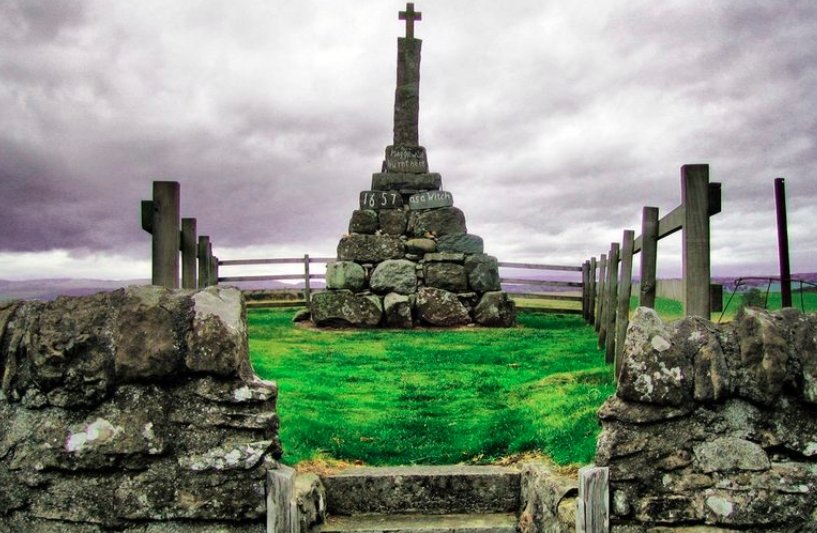In the quiet town of Dumbarton, Scotland, more than 30 locals faced brutal accusations of witchcraft in the 17th century, leading to torture and execution for many on a spot now turned into a simple car park. Campaigners today push to honor these victims with a memorial, shedding light on a painful chapter of false blame driven by fear and religious zeal.
The Grim Legacy of Witch Hunts in Dumbarton
Dumbarton, a port town on the Clyde River, buzzed with trade and tension back then. Suspicions ran high as crop failures, shipwrecks, and neighbor disputes fueled wild claims of satanic pacts. Local ministers, influenced by the Covenanter movement, preached warnings about witches hiding in plain sight, stirring panic that lasted over 150 years.
Researchers note that port areas like Dumbarton saw more cases due to the chaos of daily life. Bad luck at sea or poor harvests often pointed fingers at ordinary folks. This pattern echoed in nearby spots like Fife and Ayr, where bustling ports bred quick judgments.
One key factor was how easy it became to accuse someone. A simple argument could turn deadly, with little proof needed. The accused endured sleep deprivation, pricking tests for devil’s marks, and brutal questioning, all in the name of rooting out evil.

Uncovering Names and Stories from the Past
Louise Wilson, a dedicated local historian with the group Remembering the Accused Witches of Scotland, has dug deep into old records. Her work reveals 32 people accused between 1624 and 1697, with 22 put to death. One escaped to another town, but nine others vanished from history, their ends unknown.
These were everyday people, from healers to sailors, caught in a web of fear. Women made up most victims, but men faced the same fate. Wilson’s findings add six new names not known before, including four from 1624 trials.
Here are some notable cases from Dumbarton’s witch accusations:
- Jonet Boyd, accused in 1628 after a street clash with a notary; she was executed despite no clear motive for the charge.
- John McWilliam, a slater tried twice and executed in Edinburgh in 1655 after fleeing to Stranraer.
- Margaret McKillope from nearby Bonhill in 1697, blamed for child murders through magic based on child testimonies.
- Agnes Watsone, listed in 1658 records as a widow from Dumbarton, part of a larger purge.
Such stories show how personal grudges or bad luck led to tragedy. Accusations spread like wildfire, with one claim often pulling in others as accomplices.
Efforts to Build a Lasting Memorial
Local leaders in West Dunbartonshire now back plans for a tribute at the old execution site behind Church Street. This car park hides the grim history where victims met their end, often strangled then burned with no graves.
The council teams up with Remembering the Accused Witches of Scotland to teach these tales in schools and libraries. Workshops and events aim to keep the memory alive, especially as 2025 marks ongoing pushes for recognition.
In August 2025, councillors voted to explore the memorial, tying into broader calls for justice. Groups hope it will stand as a reminder of lost lives, much like plaques in Edinburgh and other spots.
A simple table outlines key milestones in Dumbarton’s witch history:
| Year Range | Number Accused | Executions | Key Events |
|---|---|---|---|
| 1624-1658 | 10 | 8 | Early trials, including 1658 list of 10 locals |
| 1661-1697 | 22 | 14 | Peak accusations amid national hunts |
| 2022-2025 | N/A | N/A | Apologies and memorial plans emerge |
This timeline highlights the spread over decades, with recent years focusing on healing old wounds.
Scotland’s Wider Witch Trials and Modern Reckoning
Scotland’s witch hunts stand out, with about 4,000 accused from 1563 to 1736 under the Witchcraft Act, far more than in England. Execution rates hit five times the European average, driven by King James VI’s fears after storms he blamed on spells.
In 2022, First Minister Nicola Sturgeon gave a formal apology for the injustice, calling it a colossal wrong mostly against women. The Church of Scotland followed with its own regret for fanning the flames.
By 2025, petitions seek full pardons across the UK, with leaders writing to Westminster. Places like Geel in Belgium inspire, where a saint’s story turned a town into a haven for mental health care after witch persecutions.
These events link to today’s fights against false blame, from social media mobs to unfair trials. Experts say understanding this past helps build fairer societies now.
Why This History Still Matters Today
The Dumbarton story warns of how fear can destroy lives, even without real threats. Many accused were healers using folk remedies, their skills twisted into proof of evil. This mirrors modern stigma against those seen as different.
Tying into recent events, like 2025’s pardon calls, it shows progress but also unfinished work. Communities gain from memorials that heal and educate, turning pain into lessons.
Readers, share your thoughts on remembering these victims. Comment below or spread the word to keep their stories alive.


















